#Taskrabbit Clone Development
Explore tagged Tumblr posts
Text
TaskRabbit Clone Development Services: Bringing Efficiency to Tasks
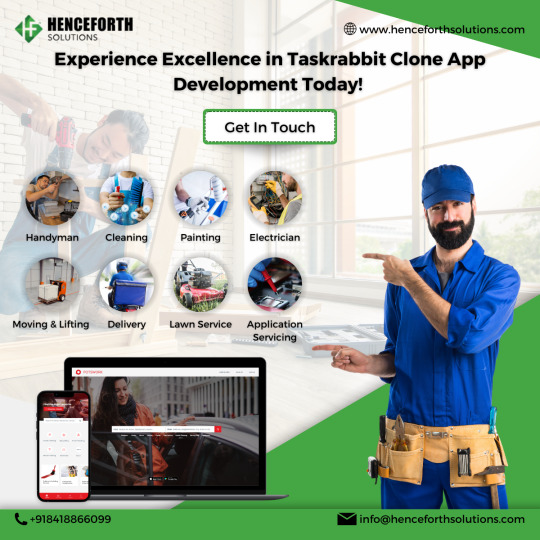
In an era defined by digital innovation and the gig economy, on-demand service platforms have become indispensable in our daily lives. One standout among them is TaskRabbit, which has redefined the way we access and offer services. Its success has inspired countless entrepreneurs and businesses to explore TaskRabbit Clone Development Services. In this article, we'll delve into the world of TaskRabbit Clone development, its impact on the gig economy, and how it brings efficiency to everyday tasks.
Understanding TaskRabbit: What Is It?
Before we embark on the journey of TaskRabbit Clone Development Services, let's understand what TaskRabbit is. Founded in 2008, TaskRabbit is an on-demand services platform that connects people in need of assistance with skilled Taskers willing to undertake various tasks. These tasks can range from everyday chores and handyman work to moving assistance and personal shopping.
TaskRabbit stands out for its user-friendly app, allowing users to post tasks, specify their requirements, set budgets, and browse profiles of available Taskers. This streamlined experience has solidified TaskRabbit's position as the go-to solution for individuals seeking efficient and reliable assistance.
Apps Like TaskRabbit: A Flourishing Trend
Apps similar to TaskRabbit have experienced remarkable growth due to several factors:
Convenience: These platforms offer unparalleled convenience, allowing users to delegate tasks and save time and effort.
Accessibility: With smartphones being ubiquitous, these apps are readily accessible, enabling users to access services on the go.
Trust: The inclusion of review and rating systems fosters trust between users and service providers, enhancing the platform's credibility.
Economic Opportunities: These platforms create economic opportunities for freelancers and independent service providers, enabling them to monetize their skills and services.
The Concept: TaskRabbit Clone Development
The concept of TaskRabbit Clone Development revolves around replicating and enhancing the core features and functionalities of the original TaskRabbit platform. However, it's not just about duplication; it involves understanding the user experience, identifying what works, and integrating innovative elements to create a unique and compelling solution. TaskRabbit Clone Development Services provide a foundation for creating a similar platform while allowing room for customization and differentiation.
Key Elements of TaskRabbit Clone Development:
User-Friendly Interface: A TaskRabbit Clone should feature an intuitive and user-friendly interface that simplifies task posting and the discovery of service providers.
Task Posting: Users should have the ability to post tasks or errands with comprehensive details, including task descriptions, locations, budgets, and deadlines.
Service Provider Profiles: Each Tasker should maintain a detailed profile showcasing their skills, qualifications, and ratings from previous tasks, instilling trust and confidence in users.
Real-Time Communication: The platform must facilitate seamless, real-time communication between users and Taskers, enabling them to discuss task specifics and updates.
Secure Payment System: Implementing a secure payment system ensures transparency and trust, allowing users to make payments for services within the platform securely.
Reviews and Ratings: A system for evaluating and rating is imperative, allowing users to provide feedback and rate completed tasks, enhancing the reputation and credibility of Taskers.
Task Matching Algorithm: Develop a robust algorithm that efficiently matches users' task requirements with the most suitable Taskers, taking into account factors such as location, skills, and availability.
Task History: Users and Taskers should have access to their task history, simplifying the management of tasks and payments.
Setting Your TaskRabbit Clone Apart:
While replicating TaskRabbit's successful elements is essential, what truly sets your TaskRabbit Clone apart is innovation:
Unique Features: Introduce unique features and services not covered by TaskRabbit, catering to niche markets or specific needs, such as pet care, event planning, or specialized consulting services.
Localization: Tailor your platform to specific regions or cities, addressing the unique preferences and requirements of local users.
Subscription Models: Implement subscription-based models that offer users benefits like reduced service fees, priority task matching, or premium customer support, fostering customer loyalty.
Task Bidding: Allow Taskers to bid on tasks, allowing users the greatest possible degree of choice of cost-effective service provider based on their budget.
Integration Opportunities: Collaborate with other service providers or apps to offer integrated services, such as grocery delivery or transportation, expanding your platform's reach and functionality.
TaskRabbit Clone Development Services: The Journey
Now that we have a clear understanding of what TaskRabbit Clone Development Services entail, let's explore the comprehensive journey:
Ideation and Conceptualization
The journey begins with ideation and conceptualization. Define your vision, outline the unique features and services you intend to offer, and consider the specific needs of your target audience.
Market Research
Conduct in-depth market research to comprehend your target market, their tastes, and the market environment. Identify gaps and opportunities that your TaskRabbit Clone can leverage.
Technology Stack Selection
Choose the technology stack that is most appropriate for your platform. The choice of programming languages, frameworks, and databases will significantly impact the platform's performance and scalability.
Design and User Experience
Invest in user-centric design. Create wireframes and prototypes to visualize the platform's interface and user flow. For attracting and maintaining customers, a fluid and simple user experience is necessary users.
Development and Testing
Hire experienced developers to bring your TaskRabbit Clone to life. Rigorous testing at each development stage is vital to identify and rectify bugs or issues. Ensure that the platform functions seamlessly on both Android and iOS platforms.
Security and Privacy
Put in place strong security measures to protect user information and transactions. Adherence to data protection laws, such as the GDPR or HIPAA (depending on your platform's scope), is imperative.
Payment Integration
Integrate secure payment gateways within the platform to facilitate seamless and secure transactions. The payment process should be user-friendly, offering various payment methods to cater to diverse user preferences.
User Acquisition and Marketing
With your TaskRabbit Clone nearing completion, it's time to strategize your user acquisition and marketing efforts. Devise a comprehensive plan to promote your platform. Utilize social media, content marketing, and strategic partnerships to reach a broader audience. Consider offering incentives or referral programs to encourage user acquisition.
Launch and User Feedback
Launch your TaskRabbit Clone strategically. You might want to begin by targeting specific regions or cities where there is a demand for your services. Collaborate with local influencers or businesses to generate buzz and interest. Collect user feedback and reviews to make necessary improvements and enhancements. The early stages of your platform are crucial for fine-tuning its features and addressing any issues.
Scaling and Growth
As your user base expands and the demand for your services increases, focus on scaling the platform's infrastructure. Ensure that your servers can handle increased traffic and transactions. Consider expanding to new markets or regions to fuel growth and reach a wider audience. Collaborate with local service providers to offer specialized services designed to meet certain client demands in regions.
Continuous Improvement
Maintain a cycle of continuous improvement based on user feedback and emerging market trends. Regularly update the platform to stay competitive and relevant. Introduce new features, enhance existing ones, and address any issues promptly. Keep a close eye on the evolving needs and preferences of your user base to ensure that your TaskRabbit Clone remains a valuable and indispensable tool.
TaskRabbit Clone vs. Custom Development
When embarking on the journey of creating your on-demand service platform, you have two primary options: using a TaskRabbit Clone or opting for custom development.
TaskRabbit Clone: Utilizing a clone script provides a foundation for your platform. It streamlines the development process by offering pre-built features and functionalities. While it can expedite the development process, it may restrict your capacity to produce truly original work. An innovative platform. However, it can be a cost-effective and time-efficient solution, making it a viable choice for startups or businesses with limited resources.
Custom Development: Choosing custom development allows for greater flexibility and customization. You have complete control over every aspect of the platform, enabling you to tailor it to your specific vision. Custom development, however, often requires more time and resources compared to using a clone script. It's the ideal choice if you have a unique concept or want to create a highly specialized platform that stands out in the market.
The decision between a clone and custom development depends on your goals, budget, and the level of uniqueness you seek for your platform. Custom development offers creative freedom but demands a more significant investment of time and resources. Clone development, on the other hand, provides a quicker path to market but may limit your ability to differentiate from competitors.
Conclusion: TaskRabbit Clone Development Services – Efficiency Redefined
In conclusion, TaskRabbit Clone Development Services offers a transformative path to enter the thriving on-demand services industry. By understanding the core principles that have made TaskRabbit a success and infusing your innovative ideas, you can create a platform that not only replicates but also enhances the efficiency and convenience of accessing services.
Your TaskRabbit Clone has the potential to simplify lives, empower freelancers, and foster a sense of community among users and service providers. It's not just about launching an app; it's about building a solution that addresses real-world needs and continuously evolves to meet user expectations.
As you progress through the stages of development, keep your users at the forefront of every decision. Listen to their feedback, adapt to their changing and pursue greatness in all areas of your life on your platform. Your TaskRabbit Clone represents more than a digital tool; it represents an opportunity to make a lasting impact on the gig economy and the future of on-demand services.
The journey may have its challenges, but each obstacle presents an opportunity for growth and innovation. Your dedication and commitment to providing a reliable and efficient solution can transform your TaskRabbit Clone into a platform that reshapes the way people access and offer services, bringing efficiency to tasks both big and small.
So, go ahead, turn your vision into reality, and embark on the exciting journey of TaskRabbit Clone Development Services. The possibilities are boundless, and the impact you can make in the world of on-demand services is immeasurable.
#Taskrabbit Clone App#Taskrabbit Clone Script#Taskrabbit Clone#Taskrabbit Clone App Development#Taskrabbit Clone Development#henceforthsolutions#OnDemandServices#GigEconomy#TaskMarketplace#TaskRabbitAlternative#TaskRabbitApp#TaskRabbitScript#TaskRabbitSoftware#CloneDevelopment#TaskAppDevelopment#TaskerPlatform#TaskRabbitScripting#CustomTaskMarketplace
0 notes
Text
TaskRabbit Clone: On-Demand Service
Instant Access: One of the primary features of on-demand services is instant access to goods or services. Users can request what they need through a digital platform (such as a website or mobile app) and receive it almost immediately or at a scheduled time that suits them.
User-Friendly Interface: On-demand service platforms typically have user-friendly interfaces that make it easy for customers to navigate, search for services, and place orders efficiently. Intuitive design and clear instructions enhance the overall user experience.
Customization and Personalization: Many on-demand services offer customization options, allowing users to tailor their orders according to their preferences. This could include selecting specific features, options, or preferences related to the service being provided.
Geolocation and Tracking: On-demand services often utilize geolocation technology to match users with nearby service providers or delivery agents. Additionally, real-time tracking features enable users to monitor the progress of their orders, from confirmation to delivery.
Rating and Review System: To maintain service quality and build trust among users, on-demand platforms typically include rating and review systems. Users can rate their experiences and leave feedback, which helps other users make informed decisions and encourages service providers to maintain high standards.
Payment Integration: Seamless payment integration is a crucial feature of on-demand services. Users should be able to securely pay for the services they receive directly through the platform using various payment methods, such as credit/debit cards, mobile wallets, or digital payment systems.
Dynamic Pricing: Some on-demand services implement dynamic pricing models, where prices fluctuate based on factors such as demand, supply, time of day, or distance. This flexibility allows service providers to optimize their pricing strategies while providing users with transparent pricing information.
Multiple Service Categories: On-demand platforms often offer a wide range of services across multiple categories, catering to diverse user needs. Common categories include transportation (ride-hailing), food delivery, grocery delivery, household services, beauty and wellness, and more.
Service Provider Network: A robust network of service providers is essential for the success of on-demand platforms. These service providers may be independent contractors or businesses that partner with the platform to fulfill user requests promptly and efficiently.
24/7 Availability: Many on-demand services operate round-the-clock, providing users with access to goods or services whenever they need them. This availability adds to the convenience factor and accommodates users with varying schedules and preferences.
Regulatory Compliance and Safety Measures: On-demand service platforms must adhere to relevant regulations and implement safety measures to protect both users and service providers. This may include background checks for service providers, insurance coverage, compliance with local laws, and data protection measures.
Customer Support: Effective customer support is essential for addressing user inquiries, resolving issues, and providing assistance throughout the service journey. On-demand platforms typically offer multiple channels for customer support, such as chat support, helplines, or email assistance.
Scheduling and Booking: Many on-demand platforms offer scheduling and booking features, allowing users to plan and reserve services in advance. This functionality is particularly useful for services like appointments, reservations, or deliveries that need to be scheduled for a specific date and time.
Multi-platform Accessibility: To reach a broader audience, on-demand service platforms often provide accessibility across multiple devices and platforms. Users can access the service through mobile apps, websites, or even dedicated interfaces for smart devices like smart speakers or wearables.
Subscription and Membership Options: Some on-demand services offer subscription or membership options, providing users with access to exclusive benefits, discounts, or perks in exchange for a recurring fee. These subscription models enhance user loyalty and encourage repeat usage.
Reliability and Trustworthiness: A renowned company's on-demand service app is likely to have a reputation for reliability and trustworthiness. Users can have confidence that the services offered meet high standards in terms of quality, safety, and reliability.
Robust Infrastructure and Technology: Renowned companies typically invest heavily in developing robust infrastructure and cutting-edge technology for their apps. This results in a seamless and efficient user experience, with features such as real-time tracking, advanced security measures, and optimized performance.
Wide Range of Services: On-demand service apps from renowned companies often offer a comprehensive range of services across various categories, catering to diverse user needs. Whether it's transportation, food delivery, household services, or wellness offerings, users can find everything they need within a single platform.
Exceptional User Interface and Experience: Renowned companies prioritize user experience design, resulting in intuitive interfaces and smooth navigation. From the onboarding process to placing orders and tracking deliveries, every step is designed to be user-friendly and hassle-free.
High-Quality Service Providers: Renowned companies typically have strict criteria for selecting service providers, ensuring that only qualified and experienced professionals are onboarded. Users can expect to receive services from skilled and vetted individuals or businesses, enhancing the overall service quality.
Responsive Customer Support: Renowned companies understand the importance of excellent customer support and invest in dedicated support teams to assist users promptly and effectively. Whether it's resolving issues, addressing inquiries, or providing assistance, users can rely on responsive customer support channels.
Transparent Pricing and Policies: On-demand service apps from renowned companies often have transparent pricing structures and clear policies regarding fees, charges, and terms of service. Users can make informed decisions and understand the costs associated with the services they're using.
Innovative Features and Constant Updates: Renowned companies continuously innovate and introduce new features and enhancements to their on-demand service apps. This ensures that users benefit from the latest technologies, trends, and improvements, enhancing their overall experience over time.
Integration with Other Services and Platforms: On-demand service apps from renowned companies may integrate with other popular services and platforms, offering added convenience and functionality. For example, integration with payment gateways, mapping services, or loyalty programs can enrich the user experience.
Commitment to Safety and Compliance: Renowned companies prioritize safety and compliance with relevant regulations and standards. They implement robust safety measures, conduct background checks on service providers, and adhere to legal requirements, ensuring the safety and security of users and their transactions.
Community Engagement and Social Responsibility: Many renowned companies are committed to corporate social responsibility and actively engage with their communities. Users who choose their on-demand service apps can feel good knowing that they're supporting a company that gives back and contributes to positive social impact initiatives.
Accessibility Features for Diverse Audiences: Renowned companies recognize the importance of accessibility and inclusion, incorporating features to accommodate users with disabilities or specific needs. This could include options for text-to-speech functionality, screen reader compatibility, color contrast adjustments, or language translation services, ensuring that the app is accessible to all users.
Social Integration and Community Building: On-demand service apps created by renowned companies often include social integration features, allowing users to share their experiences, reviews, or recommendations with their social networks. This fosters community engagement, word-of-mouth referrals, and user-generated content, contributing to the app's popularity and growth.
Educational Resources and Content: Renowned companies may provide educational resources, tutorials, or informative content within their on-demand service apps to help users make informed decisions or learn new skills related to the services offered. This could include how-to guides, video tutorials, or articles on relevant topics, enriching the user experience and adding value beyond the core service offerings.
Continuous Improvement and Feedback Mechanisms: Renowned companies actively solicit feedback from users and leverage data analytics to identify areas for improvement within their on-demand service apps. This feedback loop enables them to iteratively enhance features, address user pain points, and stay responsive to evolving user needs and preferences, ensuring that the app remains competitive and relevant in the long term.
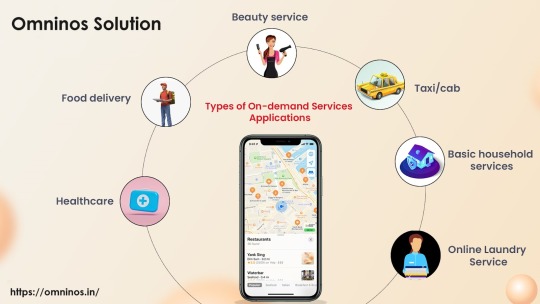
App Includes:
Android app
Ios app
Admin panel
Source code
Patent rights
Code ownership
1-3 months support and maintenance
Customisations
Payment gateway integration
Api integration
End to end deployment
Payment gateway integration
UI UX designing
Server migration
Unrestricted code
How Script Help us in Creating the App
Feature Prioritization: The script outlines a wide range of features that users expect from an on-demand service app. Developers can use this information to prioritize features based on their importance and relevance to the target audience. Features such as reliability, user-friendly interface, robust security, and responsive customer support should be given top priority during the development process.
User Experience Design: The script emphasizes the importance of exceptional user experience design, including intuitive interfaces, smooth navigation, and responsive customer support. Developers can use this guidance to design user interfaces that are easy to use, visually appealing, and optimized for various devices and screen sizes. Incorporating user feedback mechanisms and iterative testing can further enhance the overall user experience.
Integration of Advanced Technologies: Renowned companies often leverage advanced technologies such as real-time tracking, predictive analytics, and machine learning to enhance their on-demand service apps. Developers can explore integrating these technologies into their apps to provide innovative features such as personalized recommendations, dynamic pricing, and predictive scheduling, thereby offering users a more tailored and efficient experience.
Data Privacy and Security: The script highlights the importance of implementing robust data privacy and security measures to protect user information and transactions. Developers should prioritize data encryption, secure authentication protocols, and compliance with relevant regulations such as GDPR or CCPA. Conducting regular security audits and staying updated on emerging threats can help mitigate risks and build trust with users.
Scalability and Global Reach: Renowned companies often operate on a global scale, requiring their on-demand service apps to be scalable and adaptable to diverse markets and regions. Developers should design the app architecture with scalability in mind, leveraging cloud-based infrastructure and scalable technologies to accommodate growth and fluctuations in user demand. Localization features such as language support and regional customization can further enhance the app's global reach.
Continuous Improvement and Feedback Loop: The script emphasizes the importance of continuous improvement and user feedback in app development. Developers should establish feedback mechanisms within the app to solicit user input, analyze usage data, and identify areas for enhancement. Iterative development cycles, agile methodologies, and A/B testing can help refine features, address user pain points, and keep the app competitive in the evolving market landscape.
Corporate Reputation and Brand Recognition: Developers can leverage the reputation and brand recognition of renowned companies to enhance the credibility and trustworthiness of the on-demand service app. Incorporating branding elements, such as logos, color schemes, and messaging, can create a cohesive brand identity and strengthen user loyalty. Collaborating with corporate partners and leveraging their resources can also facilitate app promotion and user acquisition.
Cross-Platform Development: Based on the features outlined in the script, developers can strategize and implement a cross-platform development approach. Utilizing frameworks such as React Native or Flutter allows the app to be built for multiple platforms (iOS, Android) simultaneously, reducing development time and ensuring a consistent user experience across different devices.
API Integration and Third-Party Services: The script mentions the importance of integrating with third-party services for added functionality and convenience. Developers can identify relevant APIs and services to integrate into the app, such as payment gateways, mapping services, or communication tools. This integration enhances the app's capabilities and provides users with seamless access to additional services.
Agile Development Methodologies: Following agile development methodologies, such as Scrum or Kanban, aligns with the iterative approach recommended in the script. By breaking down the development process into smaller, manageable sprints, developers can continuously deliver incremental updates and improvements to the app. This iterative approach fosters flexibility, collaboration, and rapid adaptation to changing requirements or user feedback.
User Testing and Feedback Incorporation: The script highlights the importance of user feedback in refining the app's features and user experience. Developers can conduct extensive user testing throughout the development process, soliciting feedback from target users and incorporating their suggestions into subsequent iterations. This user-centric approach ensures that the app meets user needs and preferences effectively.
Performance Optimization and Load Testing: With scalability being a key consideration, developers should focus on performance optimization and load testing to ensure that the app can handle increased traffic and usage. Techniques such as code optimization, caching, and server scaling can help improve the app's responsiveness and reliability, especially during peak demand periods. Conducting thorough load testing simulates real-world usage scenarios and identifies potential bottlenecks or performance issues early in the development process.
Compliance with Regulatory Standards: Given the emphasis on data privacy and security, developers must ensure that the app complies with relevant regulatory standards and industry best practices. This includes implementing measures such as encryption, data anonymization, and secure authentication mechanisms to protect user data. Conducting regular security audits and staying updated on legal requirements helps mitigate risks and ensures compliance with regulations such as GDPR, HIPAA, or PCI DSS.
Documentation and Knowledge Sharing: Throughout the development process, developers should maintain comprehensive documentation to capture design decisions, technical specifications, and implementation details. This documentation serves as a valuable resource for team members, facilitates knowledge sharing, and streamlines future maintenance and updates to the app. Additionally, sharing knowledge within the development team through code reviews, pair programming, and knowledge-sharing sessions fosters collaboration and skill development.
Ethical Design and Responsible Technology Use: In line with ethical design principles, developers should prioritize responsible technology use and consider the broader societal impact of the app. This includes addressing issues such as algorithmic bias, data privacy concerns, and digital well-being. Implementing features such as consent management tools, transparency in data usage, and time management features promotes ethical design practices and cultivates trust and goodwill among users.

App Revenue Models
User Acquisition Costs (UAC): Factor in the cost associated with acquiring new users through marketing and advertising efforts. Let's assume an average UAC of Rs. 100 per user.
Retention and Churn Rate: Estimate user retention and churn rate. Assume a 20% churn rate, meaning 20% of users stop using the app each year.
Subscription Model: Offer premium features or a subscription-based model for users who want access to exclusive content or additional functionality. Let's assume 5% of users opt for a monthly subscription priced at Rs. 100 per month.
In-App Purchases: Offer users the option to purchase virtual goods, upgrades, or additional services within the app. Estimate an average of Rs. 50 per user per year in in-app purchases.
Advertising Revenue: Generate revenue through in-app advertisements. Assume an average revenue of Rs. 0.20 per impression with 100,000 impressions per month.
First Year:
Total Transactions in First Year: Rs. 25,00,000 (as calculated previously).
Commission Revenue: Rs. 5,00,000.
Subscription Revenue: Rs. 100 * 12 months * 5% * 1200 users = Rs. 72,000.
In-App Purchase Revenue: Rs. 50 * 1200 = Rs. 60,000.
Advertising Revenue: Rs. 0.20 * 100,000 impressions * 12 months = Rs. 2,40,000.
Second Year
Total Transactions in Second Year: Rs. 55,00,000 (as calculated previously).
Commission Revenue: Rs. 8,25,000.
Subscription Revenue: Rs. 100 * 12 months * 5% * 1440 users = Rs. 86,400.
In-App Purchase Revenue: Rs. 50 * 1440 = Rs. 72,000.
Advertising Revenue: Rs. 0.20 * 100,000 impressions * 12 months = Rs. 2,40,000.
Live Demo in On-Demand Services
Website | Contact | Email: [email protected]
Real-time Interaction: Live demos in on-demand services allow potential users to interact with the platform in real-time. This could involve simulating the user experience of placing an order, tracking a delivery, or accessing a service, providing a firsthand understanding of how the platform works.
Demonstration of Key Features: Live demos offer an opportunity to showcase the key features and functionalities of the on-demand service platform. This might include demonstrating the user interface, customization options, payment integration, tracking capabilities, and any unique features that differentiate the platform from competitors.
Interactive Q&A Sessions: Live demos often include interactive Q&A sessions where participants can ask questions and seek clarification about the platform's features, pricing, policies, and more. This direct engagement helps potential users gain deeper insights and address any concerns they may have.
Personalized Guidance: During live demos, presenters can provide personalized guidance and tips tailored to the specific needs and preferences of the audience. This could involve highlighting relevant services, demonstrating workflow optimizations, or suggesting best practices for using the platform effectively.
Hands-on Experience: Live demos offer a hands-on experience that allows participants to explore the platform's functionality in a controlled environment. Users can navigate through different sections, test out various features, and familiarize themselves with the platform's interface and navigation.
Instant Feedback and Iteration: Live demos enable presenters to gather instant feedback from participants regarding their experience with the platform. This feedback can be invaluable for identifying areas of improvement, refining the user interface, addressing usability issues, and iterating on the platform based on user preferences.
Building Trust and Confidence: By providing a live demonstration of the platform's capabilities, on-demand service providers can build trust and confidence among potential users. Seeing the platform in action instills a sense of reliability and transparency, reassuring users about the quality of service they can expect.
Customization and Tailoring: Live demos can be customized and tailored to suit the needs and interests of the audience. Presenters can focus on specific features or use cases that are most relevant to the participants, ensuring that the demo resonates with their requirements and priorities.
Accessibility and Convenience: Live demos can be conducted remotely, making them accessible and convenient for a wide audience. Participants can join from anywhere with an internet connection, eliminating the need for travel and enabling greater reach and engagement.
Follow-up and Support: Following the live demo, on-demand service providers can offer additional support and resources to help participants further explore the platform and address any lingering questions or concerns. This might include providing access to documentation, tutorial videos, or scheduling one-on-one consultations.
Conclusion
As on-demand services continue to evolve and expand into new industries and markets, it is essential for providers to prioritize customer satisfaction, sustainability, and community engagement. By staying responsive to user needs, embracing technological advancements, and maintaining high standards of service quality, on-demand platforms can continue to thrive in an increasingly competitive landscape.
#TaskRabbit Clone#TaskRabbit Clone UI#TaskRabbit Clone UX#TaskRabbit Clone php#TaskRabbit Clone software#push notification#TaskRabbit Clone app#TaskRabbit script app#On-Demand Services#App Development#Mobile Apps#Service Marketplace#Digital Innovation#Platform Economy#Service Delivery#Customer Satisfaction#Emerging Technologies#Entrepreneurship#Digital Transformation#Customer Engagement#App Marketing#Tech Startups
1 note
·
View note
Text
Find out how much budget you need at hand to build a native app application for your on-demand business. Also, use the given tips to reduce the app development cost.
0 notes
Text
Launch Your Handyman Business Faster with On-Demand TaskRabbit Clone
When you're creating a brand that focuses on service, being quick and reliable really matters. A TaskRabbit clone can help you do that right from the start. An on-demand TaskRabbit clone lets you start your handyman business quickly. In today’s fast-paced world, having a simple and reliable app can help you grab the attention of customers who need your services. Now, let’s break down how launching with a TaskRabbit clone can put your service business on the fast track to success.
Why are On-Demand TaskRabbit Clone App Services Rising?
The surge in on-demand TaskRabbit clone app services can be attributed to several key factors that align with changing consumer demands and business trends. As people prioritize convenience and flexibility in their daily lives, on-demand services are becoming an essential solution for completing various tasks quickly and efficiently.
Introduction to TaskRabbit Clone App
The on-demand service industry is really taking off, and apps like TaskRabbit are leading the way. People want fast and reliable help for their everyday tasks, so businesses have a great opportunity to connect customers with skilled workers when they need them. As a result, TaskRabbit clones present a unique opportunity to enter a fast-growing market with minimal setup time and significant growth potential.
Core Features Every Successful TaskRabbit Clone App Needs
Launching a successful TaskRabbit clone app requires a combination of key features that offer convenience, reliability, and a smooth experience for both customers and service providers. These core features are essential for creating a competitive platform in the on-demand service industry:
User-Friendly Interface: A simple, intuitive interface ensures that both customers and service providers can easily navigate the app. From booking services to managing tasks, an easy-to-use design encourages engagement and repeat usage, contributing to a better overall experience.
Efficient Booking System: A flexible and efficient booking system is a must for any TaskRabbit clone app. Customers should be able to easily book services, either for immediate needs or for future scheduling. Service providers must also be able to manage their availability seamlessly, ensuring smooth coordination between both parties.
Benefits of Choosing a Ready-Made TaskRabbit Clone
With the market getting tougher and changing fast, businesses are always looking for ways to improve their operations and speed things up. For those stepping into the on-demand service scene, using a ready-made TaskRabbit clone can be a smart move. It lets you set up a successful platform without going through the long and expensive process of building an app from scratch.
In Closing: Create, Launch, and Succeed with TaskRabbit Clone
As the demand for on-demand services continues to rise, a TaskRabbit clone offers a strategic and efficient way to enter the market. With its customizable features, user-friendly interface, and cost-effective development, you can quickly launch a platform that meets customer expectations. From streamlining your service offerings to ensuring seamless user experience, a ready-made clone gives you the tools you need to build a successful business. Ready to take the next step? Create, launch, and succeed with a TaskRabbit clone and pave the way for lasting growth in the on-demand services space.
0 notes
Text
How TaskRabbit Clone Script Can Impact Today’s Marketplace

The on-demand service marketplace has rapidly grown over the past few years, fueled by advancements in technology and changing consumer preferences. TaskRabbit, a pioneer in the gig economy, revolutionized how people find and hire freelancers for everyday tasks. Inspired by this model, many businesses are looking to develop their own platforms using a TaskRabbit clone script. But what exactly is a TaskRabbit clone script, and how can it impact today’s marketplace? This blog explores the potential benefits and opportunities offered by TaskRabbit clone scripts in the modern business landscape.
What is a TaskRabbit Clone Script?
A Taskrabbit Clone Script is a ready-made software solution that replicates the core functionalities of TaskRabbit, an on-demand service marketplace connecting customers with freelancers or taskers for various services such as cleaning, repairs, delivery, and more. These clone scripts offer a quick and cost-effective way to launch a similar platform tailored to specific business needs and target markets.
The Growing Demand for On-Demand Services
The demand for on-demand services has skyrocketed in recent years, driven by the desire for convenience, flexibility, and immediacy. According to a report by Grand View Research, the global on-demand services market was valued at $335 billion in 2022 and is expected to grow at a compound annual growth rate (CAGR) of 18.8% from 2023 to 2030. This trend has created a lucrative opportunity for entrepreneurs to tap into the on-demand economy by developing platforms that connect service providers with customers efficiently.
Impact of TaskRabbit Clone Scripts on the Marketplace
Lower Entry Barriers for Entrepreneurs A TaskRabbit clone script provides an affordable and efficient way for entrepreneurs to enter the on-demand service market. Unlike building an app from scratch, which can be expensive and time-consuming, a clone script allows businesses to launch their platform quickly with minimal investment. This lowers the entry barriers for new players, encouraging innovation and competition in the marketplace.
Customization and Scalability Clone scripts offer high customization levels, enabling businesses to tailor the platform according to their unique requirements. Whether you want to focus on a niche market (like home improvement or pet services) or offer a broad range of services, a TaskRabbit clone script can be modified to suit your business model. Additionally, these scripts are scalable, meaning they can grow with your business and adapt to changing market conditions, helping companies stay competitive in a dynamic marketplace.
Enhanced User Experience A TaskRabbit clone script is designed with user experience in mind. These scripts come with built-in features such as easy navigation, real-time task booking, secure payment options, and in-app communication. By offering a seamless and intuitive user interface, businesses can attract and retain more customers, which is crucial in the highly competitive on-demand service market.
Access to a Proven Business Model The success of TaskRabbit demonstrates the viability of the on-demand service marketplace model. According to Statista, the revenue generated by TaskRabbit and similar service platforms is expected to reach $4.1 billion by 2024. Using a clone script, businesses can leverage this proven model while adding their unique twist. This reduces the risks associated with launching a new business, as the foundational elements (such as service booking, payment processing, and task management) have already been tried and tested.
Faster Time-to-Market Time is of the essence in today’s fast-paced business environment. Developing a platform from scratch can take several months or even years, while a TaskRabbit clone script can be deployed in a fraction of the time. This allows businesses to capitalize on market opportunities quickly and gain a competitive edge by being one of the first movers in a specific niche or geographic area.
Cost Efficiency and Profitability Developing a platform using a TaskRabbit clone script is significantly more cost-efficient than starting from scratch. With a ready-made solution, businesses save on development costs, which can be redirected toward marketing and customer acquisition efforts. This not only reduces the initial capital outlay but also helps businesses achieve profitability faster, especially in the early stages when cash flow is critical.
Data-Driven Decision Making Modern TaskRabbit clone scripts are equipped with advanced analytics and reporting tools that provide valuable insights into user behavior, service demand, and platform performance. According to a McKinsey report, data-driven organizations are 23 times more likely to acquire customers, 6 times as likely to retain customers, and 19 times more likely to be profitable. By leveraging this data, businesses can make informed decisions to optimize their operations, improve service offerings, and enhance customer satisfaction. This data-driven approach enables companies to stay agile and responsive to market trends.
Opportunities for Local Businesses and Freelancers A TaskRabbit clone app can significantly impact local economies by providing a platform for small businesses and freelancers to reach a wider audience. According to a report by the World Bank, the gig economy could contribute up to $2.7 trillion to global GDP by 2025. Local service providers can benefit from increased visibility and access to new customers, while consumers benefit from a more comprehensive range of services. This symbiotic relationship fosters economic growth at the local level and helps build a strong, community-driven marketplace.
Conclusion
The rise of the on-demand economy has transformed how we access services, creating new opportunities for businesses and consumers alike. A Taskrabbit Clone Script offers a compelling solution for entrepreneurs looking to enter this dynamic market. By providing a cost-effective, customizable, and scalable platform, these clone scripts lower entry barriers, enable faster time-to-market, and enhance user experience—all while leveraging a proven business model. As the demand for on-demand services grows, the impact of TaskRabbit clone scripts on the marketplace will only continue to expand, driving innovation and fostering economic growth in today’s ever-evolving digital landscape.
If you’re considering entering the on-demand service market, investing in a TaskRabbit clone script could be your ticket to success. It combines the best aspects of a ready-made solution with the flexibility to tailor the platform to your unique business needs, positioning you for growth and profitability in this thriving sector.
0 notes
Text
0 notes
Text
Building Your Own TaskRabbit Clone Website: A Step-by-Step Guide
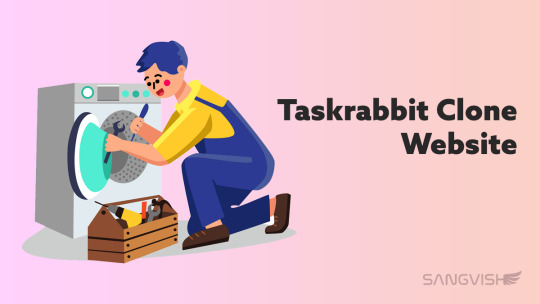
Are you planning to develop your own on-demand service marketplace like TaskRabbit? You're in the right place! This guide will lead you through the process of creating your TaskRabbit clone website using a TaskRabbit clone Script. You can take advantage of the gig economy and give users a platform to quickly and easily identify and use local service providers by using the right strategy and customization.
Steps to Build your Taskrabbit Clone Website
Step 1: Choose a Clone Script:
The first step in creating your TaskRabbit clone website is to choose a reliable clone script. Ensure that the script is well-coded, secure, and easy to customize. Popular options for TaskRabbit clone script like Buy2Tasky
Step 2: Domain Name and Hosting:
Select a memorable domain name that represents your brand and the services you offer. Choose a reputable hosting provider to ensure your website's stability and performance.
Step 3: Customize Your Website:
While clone scripts provide a foundation, it's crucial to customize your website to differentiate it from competitors. Consider the following customization options:
Branding: Customize your website with a unique logo, color scheme, and website design to establish your brand identity.
User Interface: Design an intuitive and user-friendly interface for both service providers and users.
Features: Add innovative features to enhance user experience, such as real-time chat, secure payment gateways, and a review system.
Step 4: Implement Essential Features:
To make your TaskRabbit clone website functional and appealing, include essential features such as:
User Registration and Profiles: Allow taskers and customers to create their accounts and manage their profiles.
Service Categories: Organize services into categories for easy browsing.
Search and Filters: Implement robust search functionality with filters for location, price range, and service type.
Booking and Scheduling: Enable users to book services and set appointments easily.
Payment Integration: Integrate secure payment gateways to facilitate safe and secure transactions for your platform users.
Step 5: Build a Mobile App (Optional):
Consider developing a mobile app for both Android and iOS platforms to reach a broader audience. Mobile apps can provide a more convenient user experience.
Step 6: Implement Safety Measures:
Safety is paramount when it comes to on-demand service platforms. Implement background checks for service providers and include user reviews and ratings to build trust.
Step 7: Marketing and Promotion:
Once your TaskRabbit clone website is up and running, focus on marketing and promotion:
Social Media: Use platforms like Facebook, Instagram, and Twitter to reach potential users.
Search Engine Optimization (SEO): Optimize your website for search engines like Google, Bing, etc to improve your business visibility.
Partnerships: Collaborate with local businesses or influencers for mutual promotion.
Step 8: Monitor and Improve:
Continuously monitor your website's performance and gather user feedback to make necessary improvements. Regular updates and enhancements will keep your platform competitive.
Conclusion:
Building your TaskRabbit clone website using a clone script like Buy2Tasky is a great way to enter the growing on-demand service market. By customizing your platform, prioritizing user safety, and focusing on marketing, you can create a successful business that connects users with local service providers efficiently. Remember that success in this field often depends on offering exceptional customer service and constantly innovating to meet user needs.
Take the leap into the thriving gig economy with our TaskRabbit clone script. Embark on your journey to become the go-to destination for local services today.
#taskrabbit clone website#taskrabbit clone#taskrabbit clone script#sangvish#on demand service marketplace script
0 notes
Text
Henceforth Solutions: Empowering Businesses with Clone App Solutions

At Henceforth Solutions, we are dedicated to empowering businesses with innovative clone app solutions that drive growth and success in the digital landscape. With our expertise in Doordash Clone, Talabat Clone, Dubizzle Clone, eBay Clone, Postmates Clone, Gojek Clone, Uber Clone, Airbnb Clone, Zomato Clone, Amazon Clone, Taskrabbit Clone, and more, we provide comprehensive app development services tailored to meet your specific business requirements.
Elevate Your Business with Custom Clone App Development
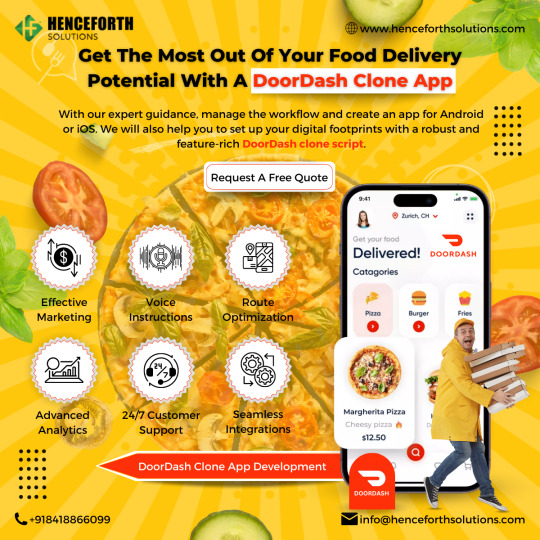
Doordash Clone: Revolutionize Food Delivery Services
Our Doordash Clone app development services offer a powerful solution to establish a robust food delivery platform. With advanced features like intuitive interfaces, real-time order tracking, secure payments, and customer ratings, our Doordash Clone app ensures a seamless experience for customers and delivery personnel alike. Explore the immense potential of the food delivery industry with our Doordash Clone app solution.
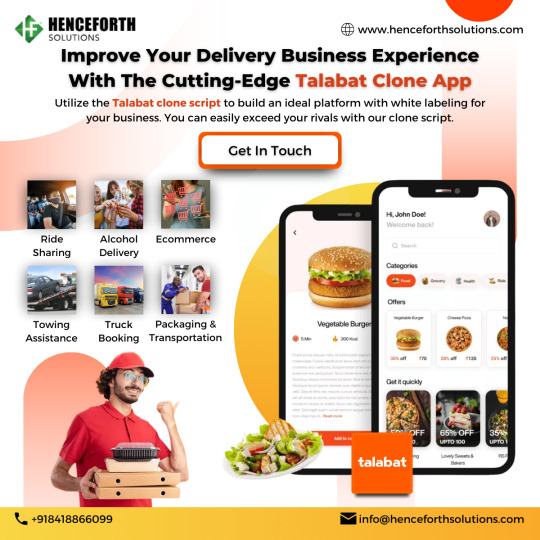
Talabat Clone: Build a Thriving Online Food Marketplace
With our Talabat Clone app development services, you can create a powerful online food marketplace that connects restaurants, customers, and delivery personnel seamlessly. From user-friendly interfaces and advanced search options to secure payments and restaurant reviews, our Talabat Clone app is designed to elevate your business in the food delivery sector. Harness the potential of a thriving online marketplace with our comprehensive Talabat Clone app solution.

Dubizzle Clone: Create a Dynamic Classified Ads Platform
Transform the classified ads industry with our Dubizzle Clone app development services. Our feature-rich Dubizzle Clone app provides an exceptional platform for buyers and sellers to connect effortlessly. With advanced search filters, secure transactions, review systems, and user-friendly interfaces, our Dubizzle Clone app enables you to establish a powerful presence in the online marketplace.
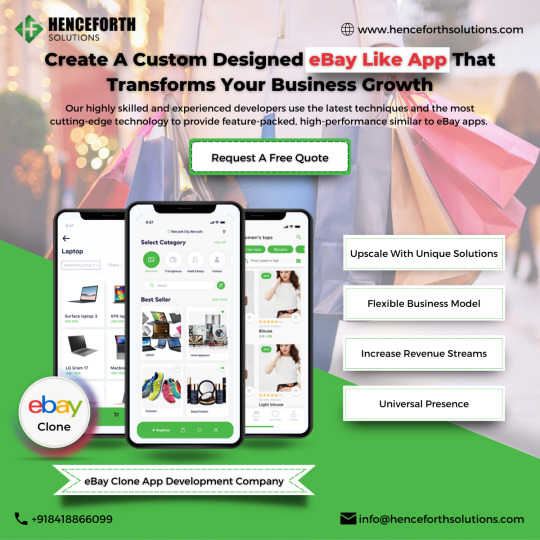
eBay Clone: Dominate the E-commerce Market
Experience the limitless potential of e-commerce with our eBay Clone app development services. Our comprehensive solution offers a robust platform for users to buy and sell products seamlessly. With advanced features such as bidding systems, secure payment gateways, personalized profiles, and advanced search algorithms, our eBay Clone app ensures a seamless online shopping experience that rivals industry giants.
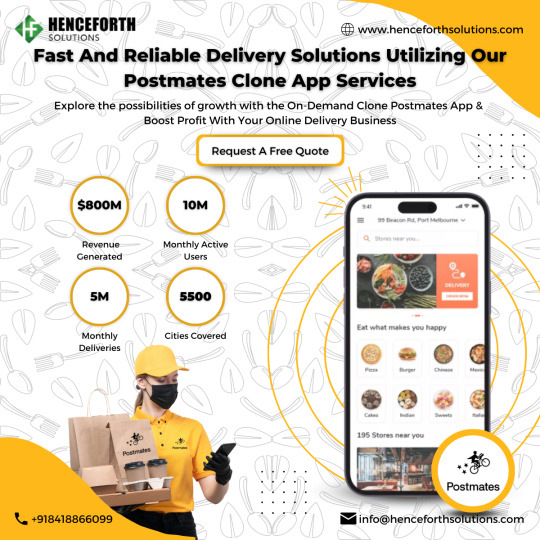
Postmates Clone: Enter the On-Demand Delivery Industry
Our Postmates Clone app development services enable businesses to establish a reliable on-demand delivery platform. Seamlessly connecting customers, drivers, and merchants, our Postmates Clone app offers an intuitive interface, real-time tracking, secure payments, and order management systems. Explore the possibilities of entering the on-demand delivery industry with our feature-packed Postmates Clone app.

Gojek Clone: Unlock the Potential of Multi-Service Platforms
With our Gojek Clone app development services, you can create a versatile multi-service platform that offers ride-hailing, food delivery, grocery delivery, handyman services, and more. Our Gojek Clone app provides a user-friendly interface, efficient service management, secure payments, and real-time tracking. Embrace the power of a comprehensive on-demand service platform with our Gojek Clone app solution.
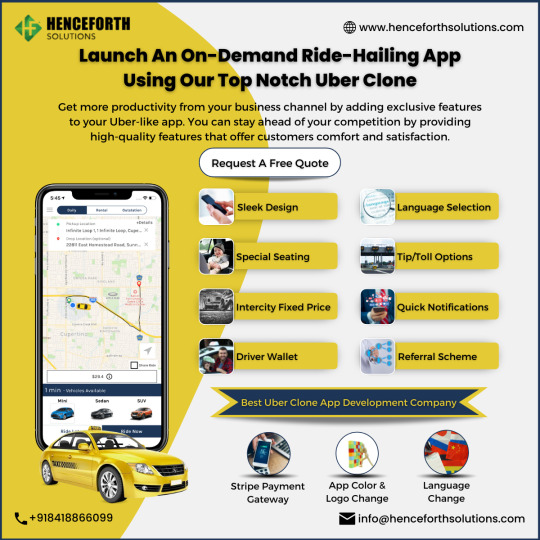
Uber Clone: Revolutionize Transportation Services
As a leading Uber Clone app development company, we specialize in crafting robust and feature-rich clone apps for the transportation industry. Our Uber Clone app offers seamless experiences for riders and drivers with features like real-time tracking, secure payments, ratings, and reviews. Experience the success of Uber in your transportation business with our reliable and innovative Uber Clone app solution.

Airbnb Clone: Thrive in the Vacation Rental Industry
With our Airbnb Clone app development services, you can establish a thriving vacation rental marketplace. Our Airbnb Clone app offers features like property listings, secure bookings, reviews, and more. Create a user-friendly platform that connects hosts and guests seamlessly, and elevate your business in the hospitality industry with our comprehensive Airbnb Clone app solution.
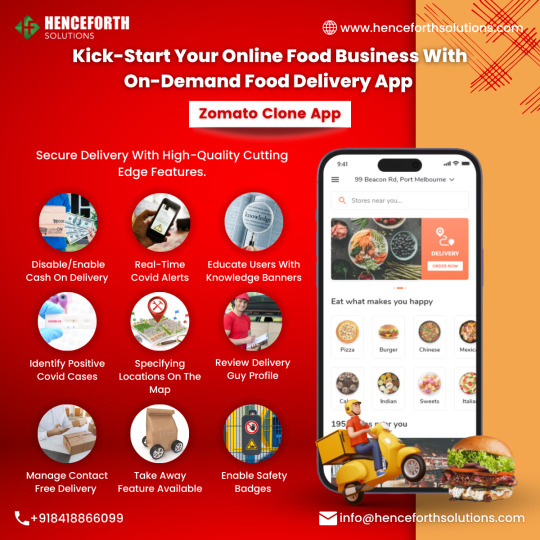
Zomato Clone: Dominate the Food Delivery Market
Our Zomato Clone app development services empower businesses to establish a powerful food delivery platform. With advanced search options, online payments, restaurant reviews, and intuitive interfaces, our Zomato Clone app ensures a seamless experience for customers, restaurants, and delivery personnel. Tap into the immense potential of the food delivery market with our comprehensive Zomato Clone app solution.

Amazon Clone: Build a Successful E-commerce Platform
Enter the world of e-commerce with our Amazon Clone app development services. Our comprehensive solution provides a feature-rich platform for users to buy and sell products effortlessly. With advanced search algorithms, secure payment systems, personalized profiles, and intuitive interfaces, our Amazon Clone app ensures a seamless online shopping experience that rivals industry giants.
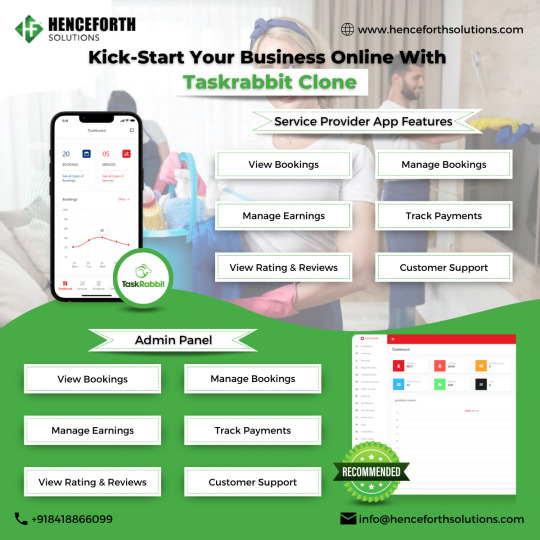
Taskrabbit Clone: Establish a Thriving On-Demand Service Marketplace
With our Taskrabbit Clone app development services, you can create a platform that connects customers with service providers seamlessly. From handyman services to personal assistance and more, our Taskrabbit Clone app offers a seamless experience for users seeking a variety of services. Enter the on-demand service industry with our reliable and feature-packed Taskrabbit Clone app solution.

Your Reliable Clone App Development Partner
At Henceforth Solutions, we go beyond just clone app development. We strive to understand your business requirements, industry dynamics, and target audience to deliver custom solutions that align with your goals. Our team of skilled developers, designers, and project managers work collaboratively to ensure that your clone app is built to perfection.
Whether you require a fully-customized clone app, specific modifications to an existing clone script, or comprehensive support and maintenance services, we have the expertise to meet your needs. Our commitment to excellence, attention to detail, and utilization of the latest technologies enable us to deliver outstanding results that empower your business to succeed.
#appdevelopment#mobile app development#blockchain#henceforth solutions#mobileappdevelopment#cryptocurrency#nft#crypto#nftart
1 note
·
View note
Text
Takrabbit Clone Script
We are on of the best task rabbit clone app development company in india, we have a readymade solution for taskrabbit kind of application. If you are looking for taskrabbit kind of application contact us: 9988863636
Omninos Solutions is a leading software development company specializing in cutting-edge solutions for businesses across various industries. With a focus on innovation, quality, and client satisfaction, Omninos Solutions offers a wide range of services including mobile app development, web development, e-commerce solutions, digital marketing, and more. Leveraging the latest technologies and industry best practices, Omninos Solutions delivers customized software solutions tailored to meet the unique needs and objectives of each client. With a team of highly skilled professionals and a commitment to excellence, Omninos Solutions strives to empower businesses with robust, scalable, and cost-effective solutions that drive growth and success in today's competitive marketplace.
0 notes
Video
tumblr
On-demand service marketplace apps came as a bolt from the blue and helped people find their service professionals through its platform. These apps will also provide a range of services like handyman services, delivery professionals, home cleaners, home painters, security guards, wedding planners, plumbers, etc.
click here: https://www.appdupe.com/taskrabbit-clone-script
#taskrabbit clone app development#taskrabbit clone script#Taskrabbit clone#thumbtack clone#thumbtack clone script
0 notes
Text
ON DEMAND APP DEVELOPMENT
On-demand services apps are everywhere – we will hardly imagine a field unknown to the on-demand market. sort of services, speed, convenience, and quality make these apps popular and widely used around the globe. But behind everything, there is a fast, reliable, and easy-to-use platform.
So, the way to approach launching an on-demand application? during this guide, we’re covering what on-demand services there are, what are their types, must-have features and steps to create one – let’s start.
What Is On-Demand Service App?
On-demand delivery software works as a mediator between a customer and a business. a bit like Uber does for cabs, Airbnb for hotels and Zomato for food delivery.
The on-demand platform allows users to order any quiet service and strives to deliver it in minutes. Like booking a ride through Uber.
These apps solve users' major and minor everyday problems. For now, there are on-demand platforms in beauty, education, healthcare, taxi and cargo delivery, food delivery, and lots of other fields. and that we can get all that beauty just by a couple of finger taps.
The on-demand service's app connects customers with different service providers and the other way around. Of course, the platform charges a fee for that. But users from each side often prefer paying extra cash overspending hours checking out the proper specialist/customer.
Thus, on-demand apps offer a faster and more convenient procedure and make their few dollars reciprocally.
Here’s how on-demand apps like Uber work:
1. User places an invitation.
2. App connects them with a service provider.
3. Provider checks the request and accepts it.
4. Payment is permitted.
5. Provider delivers the service.
6. Customer confirms the delivery.
7. Payment is deducted.
The workflow of on demand app development
According to Burson-Marsteller’s survey, 42% of adult Americans have used a minimum of one among on-demand app services. and therefore the number is merely growing.
There are a couple of reasons for such popularity:
Lower costs
On-demand platforms offer lower prices, compared to traditional providers. And cost's often the most driver for buyers.
Availability
Smartphones and tablets are everywhere, so any service with a reliable mobile platform is handy, accessible, and one-click easy to urge.
Adjustment to users’ preferences
On-demand businesses know what their users want, and that they aim to deliver services as fast as possible. as an example, with Jiffy, a home-service platform, you’ll get a plumber to repair the faucet within 2-3 hours, not days.
Various payment methods
Mostly, on-demand apps use Stripe or Braintree payment gateways or e-wallets like PayPal. of these tools are highly secured, fast and reliable. Besides, on-demand delivery apps accept cash also.
Minimum efforts
There’s a choice to save your details like payment info, delivery address, and so on. No got to enter this information again and again with each new order.
Variety
Tens of apps in each category, from babysitting to make-up service, meaning each user can find an answer that works best for them.
Types of On-Demand Apps
As you'll see, there are quite a lot of spheres on-demand services come suitable for. Taxi, meal delivery, dog walking, babysitting, laundry pick-up – on-demand applications seem to be taking care of everything.
So, let’s take a glance at the foremost popular categories and consider leading apps in each.
Taxi Services
The taxi and transportation field benefits from on-demand service apps the foremost. No wonder big players like Uber or Lyft have changed the sport forever. Now, the taxi apps let customers book a car just during a jiffy. All they need to try to is about their destination and await the cab to arrive.
The driver will get a ride request and, if everything's arranged, come to select their passengers.
Eager to build your own Uber-like taxi app? Check our 'How to make an App Like Uber' guide, explaining all the nuances.
Today's on-demand taxi apps offer many new features but the must-haves are:
• Map and GPS navigation that helps customers catch nearby taxis
• Communication channels between riders and drivers
• Advanced feedback system (rates and reviews)
The most well-known taxi apps apart of Uber and Lyft are:
• Flywheel
• Curb
• Free Now
The best-known on-demand taxi services
By the way, we've also worked on a P2P on-demand app called Move Up. It’s a taxi service a bit like Uber or Lyft but targeted both at regular people that need a ride and at those with specific medical needs, bulky items, parents with children, etc.
We had to manoeuvre far away from the Uber-like business model, create a classy filtering system, and permit offline driver's validation. Besides, there are also complex payment capabilities with a free-ride option.
Result? Scalable and versatile platform with integrated GPS technology, Stripe, and other features that helps people find the simplest transport option to meet their needs.
For now, Move-Up features a website and iOS application.
Food Delivery
Using a food on-demand delivery platform, users order meals from nearby eateries after checking the menus. As soon because the customer places an order, the restaurant starts preparing the dish and indicates when the food is going to be ready.
By that point, the courier reaches the eatery, picks the food up and delivers it to the listed address.
The key food delivery apps’ success is, as usually, speed and therefore the simple use. An on-demand app may be a win-win solution for both customers and restaurant owners. Users can easily order food from many places by checking menus within the app. And owners get more orders, thus, more revenue.
The best on-demand delivery platforms within the field are:
• UberEats
• GrubHub
• Instacart
• Doordash
Most popular on-demand food delivery platforms
Household Chores
House cleaning, repairs, dog walking many |and plenty of"> and lots of other everyday tasks take lots of time. And for those that need help with household chores, on-demand apps may be a perfect answer.
For example, if you bought a leakage issue reception, you only post an invitation on the app and a nearby plumber fixes it in no time. Same way, these platforms help with fixing carpentry problems, home appliances, etc.
Apps that have gained popularity during this niche include:
• TaskRabbit
• Merry Maids
• Thumbtack
Household on-demand platforms
Gifts & Flowers Delivery
Forgot about a friend's or relative's birthday or simply happen to be in another city? On-demand delivery startups come to the rescue again. As for now, the delivery of gifts and flowers are one of the solutions to enter the market and gain customers. Apps attract users because of:
• Wide choice of obtainable products;
• Abilities to settle on the delivery time;
• Doorstep delivery.
Today, the leaders during this field are:
• UrbanStems
• Gyft
• Giftagram
Platforms that deliver gifts or flowers
Healthcare
On-demand medical apps connect patients with doctors. So users can ask their physicians one-on-one once they need help. And a bit like during a standard visit, doctors make recommendations.
Of course, no app can look out for great disease, and patients can’t get tested or properly examined without getting to a hospital. But a clear consultation is some things on-demand service apps can deal with.
The best healthcare apps are:
• Doctor on Demand
• Pager
• IsDocin
The most popular healthcare service apps
How to Make an On-Demand App: most vital Steps
Finally, it’s time to seek out where to start out building your own on-demand app. So, let’s determine the way to build an on-demand app, step by step.
1. Do a search
It's a big mistake when investors care only about tech aspects (coding) and ditch the thought. After all, coding just guarantees that the app will run smoothly. But it is the customer research that helps with finding the audience, their pains and problems.
Besides, the research helps with building apps that bring a friendly experience to users.
Here are the most tips:
• Learn about customers. Online behaviours, hobbies, pains and wishes – the more you recognize about future users, the more attractive app you'll build.
• Concentrate on unique functions. On the market, this saturated, the simplest and sometimes the sole thanks to attracting customers is to supply an ingenious solution. nobody wants to download on-demand delivery app clones with the same features.
• Don't attempt to please everyone. albeit you are doing, the app won't be capable of solving all users' issues. specialise in the bulk. Continuous updates aimed to serve all needs cost tons – and there are no guaranteed profit returns.
2. Pick the features
If you’re still unsure of your product’s success or simply want to launch the app as soon as possible, choosing the MVP set could also be the simplest option.
Still, there are some features that just can’t be skipped:
• Registration
• Geolocation (or tracking)
• Notifications
• Payment
(Look for more details about features within the next section).
3. on-demand app development services require many technologies, counting on the choice of platforms. In fact, choosing a platform to create an app for is that the most vital part because it directly relates to customers' media experience. Thus, you'd better launch the app on platforms that are popular among your target users and keep close attention to tech details.
Generally, there are three sorts of platforms you would like to worry about:
• web platform (runs during a web browser)
• native app (e.g. iOS/Android)
• cross-platform technology (cost-effective method for both iOS and Android apps)
Check our 'Native vs. Hybrid App' comparison to seek out out which approach will work for you.
4. Find the proper development team
When everything’s planned and arranged, it’s time to start out trying to find on-demand app developers. Currently, there is two popular options – in-house or outsourced development:
1. In-house teams – great for long-term projects that require 24/7 support and maintenance, but are often very expensive (you’ll need to cover insurance, taxes, salaries, vacation, sick days).
2. Offshore developers – great for both short and future projects, cost-effective (you pays exactly for the work done), and outsourcing teams are able to sign the contract to guard both parties.
Before contacting an on demand app development, it’s always better to make an inventory of features you’d wish to see. But first, you ought to define what percentage of parties are getting to use the platform.
For example, if you are making a taxi, beauty or household service app, two parties are involved – customers and repair providers. And, as business owners must have full control over both parties, an admin panel is another need.��But when it involves food delivery, there's another party involved – the eatery which prepares the meal.
1 note
·
View note
Text

WebFox provide On Demand Service Website Development Solutions to revolutionize your business. We offer customized house painting, carpet cleaning service, home renovation, grocery store shopping, house maintenance, virtual assistance & smart home installation solutions to meet your requirements.
0 notes
Text
Are you looking for the best clone code for web portals like TaskRabbit and Thumbtack? Omninos Solution is a digital platform that offers clone code for on-demand services websites/apps. On-demand services platforms like TaskRabbit and Thumbtack. They offer services between clients and seekers.
0 notes
Text
The Ultimate Guide to Creating an Uber for X App [2022]
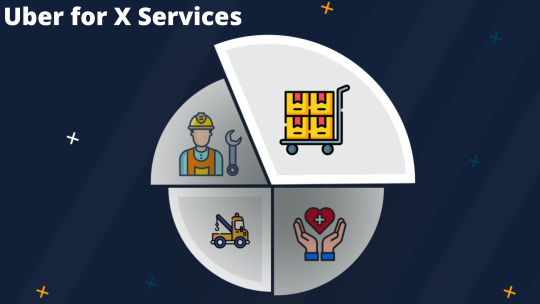
From ordering pizza to booking a daily commute, we all rely on on-demand mobile applications. [I couldn't end the day without them!]
However, everything started in March 2009, when Uber launched its ride-hailing services in San Francisco, California.
Since then, the popularity of on-demand applications has not declined significantly.
Even during the COVID period, on-demand apps supported people in a variety of ways, such as ordering food, groceries, and even medicine.
[TaskRabbit provided contactless medicine delivery services to help people during these difficult times.]
Several young entrepreneurs were inspired to launch their own on-demand service marketplaces [also known as Uber for x services] as a result of the success of Uber.
What is Uber for X means?
Startups with similar business models or services to Uber are commonly referred to as Uber for X services.
Some of the famous uber for x models are,
Postmates
Taskrabbit
Roadie
Soothe
And the list goes on.
Coming back to the topic, How to create an Uber for X app?
Are you aware that there are some ready-made Uber for X scripts on the market?
What is the Uber for X script?
Uber for X scripts assist entrepreneurs like you in create an app like Uber for any on-demand service ideas.
Here are some of the main reasons why entrepreneurs like you prefer ready-made Uber for X scripts for their businesses,
They are pre-built applications that enable you to quickly get your business up and running.
Ready-made apps are less expensive than building an app from scratch.
They are completely customizable and scalable.
The business model of Uber for X services
Uber for x businesses adheres to Uber's business model as the pioneer of on-demand services.
Here's how it works,
Using the mobile application, the customer registers on the platform.
Then he or she will select the service required and submit a booking/order request.
The platform matches the customer's service request with registered service providers in the area.
The service provider accepts the request and provides the customer with the requested service.
The customer then pays for the service provided and rates the service provider.
The entire business operation is managed by the business admin, who will be given access to an admin web panel.
It may appear to be simple. However, numerous background processes must be completed in order for the app to function properly.
Let's look at some of the best Uber for X business ideas to see where you can put this business model to use.
On-demand taxi booking app
Food delivery business
Grocery delivery business
Two truck booking app
Alcohol delivery business
Bike ride booking app
On-demand beauty services app
On-demand handyman app
Courier delivery business
Pharmacy delivery business
Flower delivery business
We discovered a massive list of business ideas that can assist entrepreneurs like you in starting successful online businesses.
But how do you make an app, and what is the best technology to help you get started?
Technology that suits best uber for x app development
Technology has an impact on how the app is built, the features that can be included, the cost of development, and so on.
When selecting technology for your Uber-like app development, you must be at your best.
Flutter is the best technology to build uber for x apps.
But Why Flutter?
Flutter is a cross-platform technology. It can assist you in developing iOS and Android apps from a single code base.
Flutter saves money and time when developing apps.
Flutter provides faster app performance and an appealing user interface.
Flutter apps are scalable and perfect for startups.
Cost of creating an uber for X app
When you decide to create an app like Uber, you have two options.
Creating an app from scratch
Creating an app using readymade uber clones
The former costs a lot more than the latter in every way.
The readymade Uber clone app includes all of the MVP features and functionalities needed to get your business up and running.
You will receive the complete source code so that you can add additional features as needed.
Furthermore, because cross-platform technologies are used, development costs far less than native development.
According to the current market, creating an app from scratch will cost you between $20,000 and $50,000, and it will take a long time to launch your app.
In comparison, a readymade app will cost you around $5000, which is much more affordable for a startup owner.
It's time to pick a business idea and get to work on it.
All the best.
0 notes
Link
Looking to build on-demand App Like TaskRabbit Clone? Check How Much Does It Cost to Develop an App, cost & key features.
#app like taskrabbit#app like taskrabbit clone#taskrabbit clone app development#taskrabbit clone app#taskrabbit clone app ideas#appideas2022
0 notes